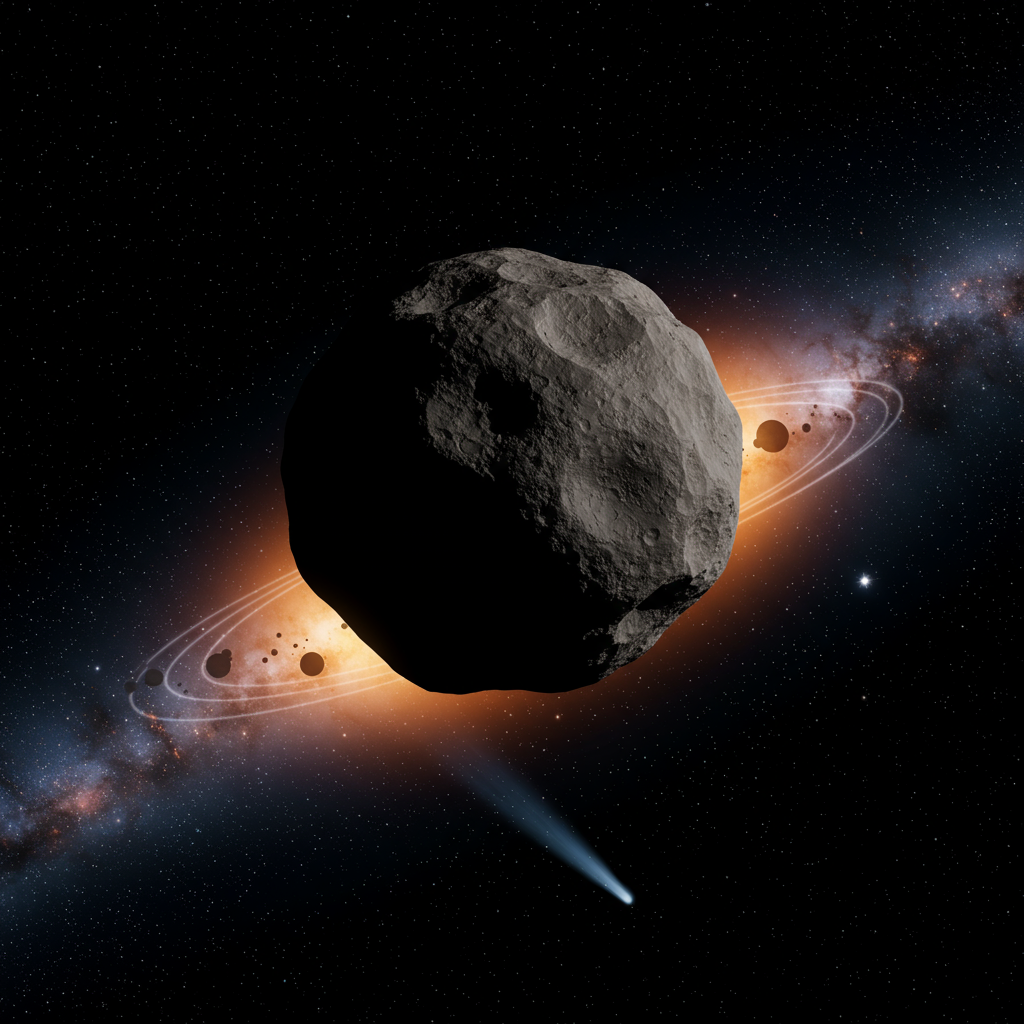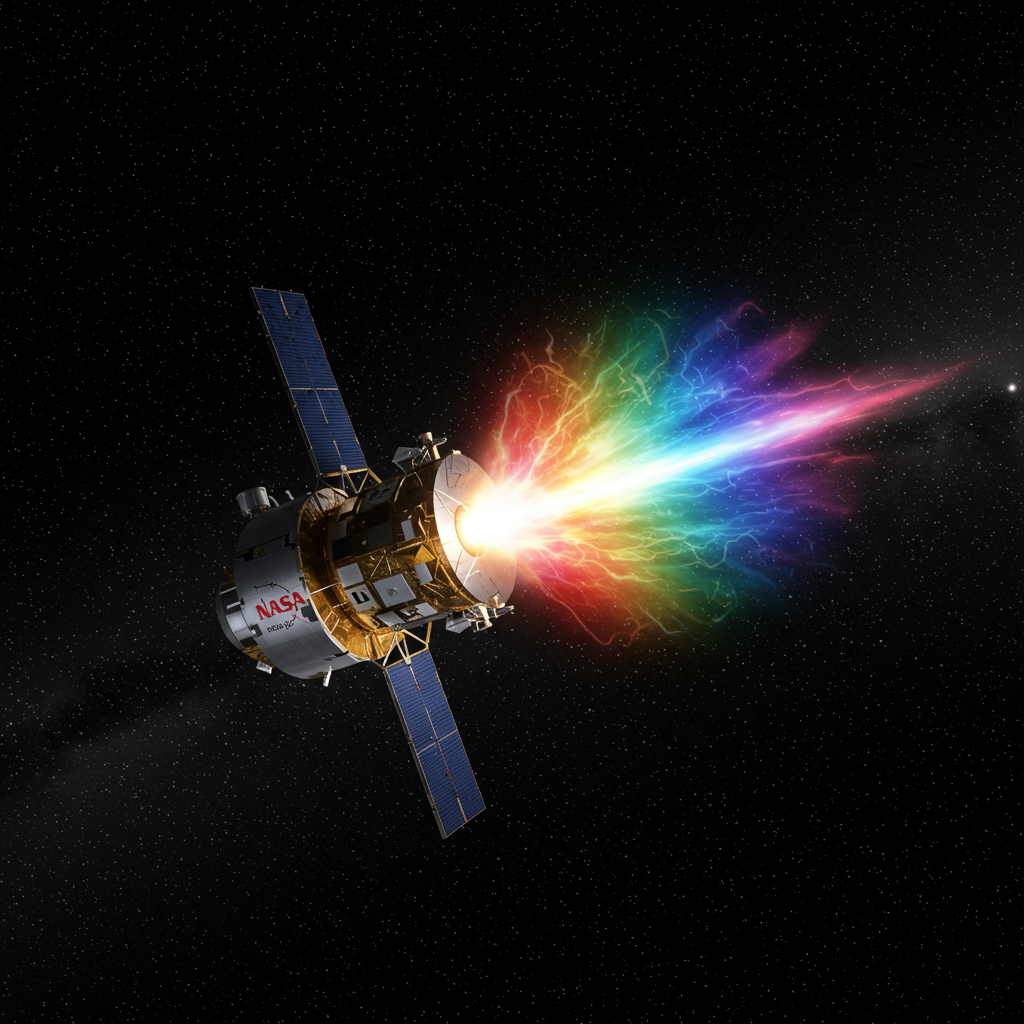An extraordinary celestial visitor, interstellar object 3I/ATLAS, has captivated astronomers worldwide. This mysterious comet, only the third confirmed object to enter our solar system from beyond, is now believed to be a staggering 10 billion years old. Such an ancient origin positions 3I/ATLAS as a priceless “time capsule,” offering unprecedented insights into the earliest eras of the Milky Way and the formation of the universe’s primordial planetary systems. Recent groundbreaking research utilizes advanced simulations and galactic mapping to trace its incredible journey, unraveling secrets that predate our own sun by billions of years.
An Unprecedented Cosmic Visitor: Introducing 3I/ATLAS
On July 1, astronomers spotted an unusual object speeding through our solar system. Traveling at nearly twice the velocity of its predecessors, ‘Oumuamua and Comet Borisov, this new visitor quickly confirmed its extrasolar origin. Initially designated A11pl3Z and later officially named 3I/ATLAS, it exhibited distinct cometary characteristics, including a hazy coma of gas and dust. Scientists estimate its rocky nucleus to be approximately 5.6 kilometers (3.5 miles) wide, with some estimates ranging up to 11.2 kilometers (7 miles), making it potentially the largest interstellar object yet discovered, and carrying a potential mass exceeding 33 billion tons.
Observations have tracked 3I/ATLAS as it moves through the inner solar system. It made a close pass by Mars on October 3rd and is projected to reach its closest point to the sun around October 30th. Fortunately, NASA has consistently confirmed that this remarkable comet poses no threat to Earth, with its closest approach remaining safely millions of miles away. After its solar flyby, 3I/ATLAS will continue its “grand tour,” passing Jupiter in March 2026 before eventually receding back into the vastness of interstellar space, disappearing from our view. Its prolonged observation window provides astronomers with several months to study this rare phenomenon in detail, a stark contrast to the fleeting glimpse offered by ‘Oumuamua.
Tracing a Ghost Through Time: The Scientific Quest for Origin
Pinpointing the distant origins of an object traveling at 130,000 miles per hour for billions of years presents an immense challenge. Such prolonged interstellar journeys expose objects to the gravitational tugs of countless stars, constantly altering their trajectories. Luckily, gravity is time-reversal symmetric. If scientists know an object’s current path, they can mathematically reverse-engineer its journey. This principle formed the basis for a new study led by a team from the University of A Coruña, whose findings were submitted to the Astrophysical Journal.
The research team meticulously applied this technique, using high-precision data from the European Space Agency’s Gaia mission. Gaia provides an unparalleled three-dimensional map of stars and other objects across the Milky Way. By tracing 3I/ATLAS‘s trajectory backward through 10 million years, the astronomers simulated its path through a dense galactic environment containing over 13 million stars. Their primary goal was to identify any close encounters – within 2 parsecs (6.5 light-years) – that could explain its current velocity and direction.
A crucial finding emerged from these extensive simulations: none of the identified 93 potential stellar encounters, even the 62 deemed statistically significant, produced any meaningful perturbation to 3I/ATLAS‘s trajectory. As the team noted in their paper, “Our results indicate that no stellar flybys within the past 10 Myr and 500 pc contained in Gaia DR3 can account for the present trajectory of 3I/ATLAS or be associated with its origin.” This strongly suggests that its high velocity and unique path are not due to recent gravitational interactions, but rather are remnants of a much older, more distant ejection event.
Unraveling Galactic Ancestry: Thin Disk, Thick Disk, and Ancient Secrets
While the immediate stellar neighborhood offered no clues to 3I/ATLAS‘s recent past, the backward mapping still provided significant insights into its galactic ancestry. The team concluded that the object likely originated from the galaxy’s thin disk. This contrasts with an earlier study which suggested a thick disk origin, given how little the object deviated from the galactic plane. Pérez Couto, the research team leader from the Centre for Research in Information and Communication Technologies, emphasized the object’s age. He noted that its characteristics align with ejection from a primordial planetesimal disk in an early-formed system, or an exo-Oort cloud. This places its likely origin in the transition region between the thin and thick disks of the Milky Way, reinforcing its extreme antiquity.
Adding further weight to the ancient origin hypothesis, University of Oxford astronomer Matthew Hopkins and his colleagues, using their Ōtautahi–Oxford Model, theorized that 3I/ATLAS originated in the Milky Way’s thick disk. The thick disk is known as a band of the galaxy’s most ancient stars, distinct from the younger, more metal-rich thin disk where our own solar system resides. Oxford astrophysicist Chris Lintott highlighted the significance: “This is an an object from a part of the galaxy we’ve never seen up close before.” Both research efforts converge on the incredible age of this cosmic traveler. The preliminary studies suggest 3I/ATLAS could be around 10 billion years old, making it more than double the age of our 4.5-billion-year-old sun.
Why 3I/ATLAS is a Cosmic “Time Capsule”
The profound age of interstellar object 3I/ATLAS is what truly elevates its scientific importance. If confirmed to be 10 billion years old, it has been traversing interstellar space for billions of years, a silent witness to galactic evolution since its formation. This makes it a genuine “time capsule” from the very formation of the earliest planetary systems within our galaxy and the wider universe. It offers scientists a direct, tangible sample from a bygone era, potentially holding clues about the composition of matter and conditions prevalent in the ancient Milky Way.
Studying 3I/ATLAS allows researchers to observe the evolution of objects originating from other stellar systems—a concept previously confined to theoretical models. As Pérez Couto remarked, “Each observation is like opening a window into the Universe’s past.” Early data also hints at a reddish hue, which could signify a composition of primeval matter, further solidifying its status as an “extremely old geologic time capsule.” As 3I/ATLAS continues its journey inward towards the sun, astronomers anticipate increased cometary activity. The warmth will cause its water ice and other volatile compounds to sublimate, forming a larger coma and a luminous tail, providing more data about its elemental makeup and helping test theories about its ancient origins.
The Future of Interstellar Exploration
The discovery and ongoing study of 3I/ATLAS represent a significant milestone in astronomy. While its precise origin remains partially undisclosed, the preliminary studies have opened tantalizing avenues for further research. Instruments on Earth, Mars (possibly NASA’s Perseverance rover), and in orbit around Jupiter will all have opportunities for more detailed observations. Ground-based telescopes are expected to track the comet through September 2025, with renewed observations anticipated in early December 2025 after it emerges from behind the sun.
Moreover, observatories like ESO’s Very Large Telescope (VLT) have already captured images, and the upcoming Vera C. Rubin Observatory is poised to contribute significantly. The composition of interstellar comet 3I/ATLAS as its ice vaporizes will be a crucial test for the models developed by researchers like Matthew Hopkins. Analyzing the gases and dust ejected from its nucleus promises to provide essential clues about its cosmic birthplace. This era of interstellar object discovery, with the Vera C. Rubin Observatory alone predicted to find between 5 and 50 more, marks an exciting new chapter in our quest to understand the vast, ancient history of our galaxy and beyond.
Frequently Asked Questions
What makes 3I/ATLAS such a significant discovery in astronomy?
3I/ATLAS is only the third confirmed interstellar object ever detected, meaning it originated from outside our solar system. Its extreme speed and unique trajectory confirm its extrasolar provenance. Most notably, scientific studies suggest it could be around 10 billion years old, making it potentially the oldest comet ever observed. This immense age positions it as a “time capsule,” offering invaluable insights into the early formation of stars and planetary systems in the Milky Way, long before our own solar system existed.
How do scientists trace the origin of an interstellar object like 3I/ATLAS?
Scientists utilize advanced astronomical data and computational simulations to trace the origin of objects like 3I/ATLAS. A key method involves applying the principle of time-reversal symmetric gravity. Using high-precision data from missions like the European Space Agency’s Gaia telescope, researchers simulate the object’s trajectory backward through millions of years. This allows them to identify potential close encounters with stars that might have altered its path and infer its most likely region of origin within the galaxy, such as the thin or thick disk.
Why is 3I/ATLAS considered a “time capsule” from the early universe?
3I/ATLAS is considered a “time capsule” because its estimated age of 10 billion years makes it billions of years older than our sun and solar system. This means it formed during a much earlier period of the universe’s history. By studying its physical and chemical composition as it passes through our solar system, astronomers can analyze primordial matter. This matter likely originated from an early-formed planetary system, offering a direct window into the conditions, elements, and processes that characterized the formation of the very first planetary systems in the ancient Milky Way.




